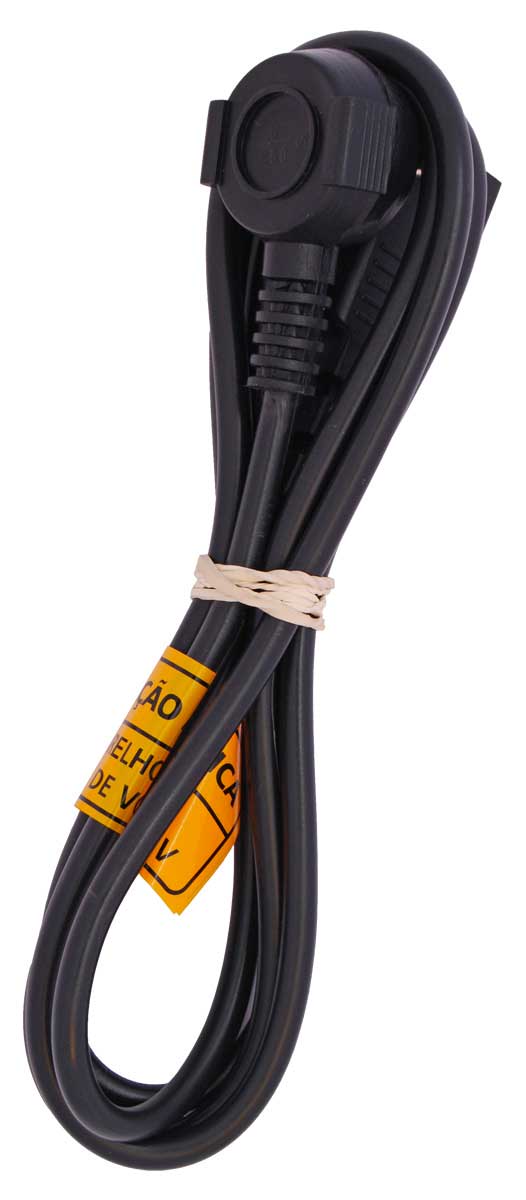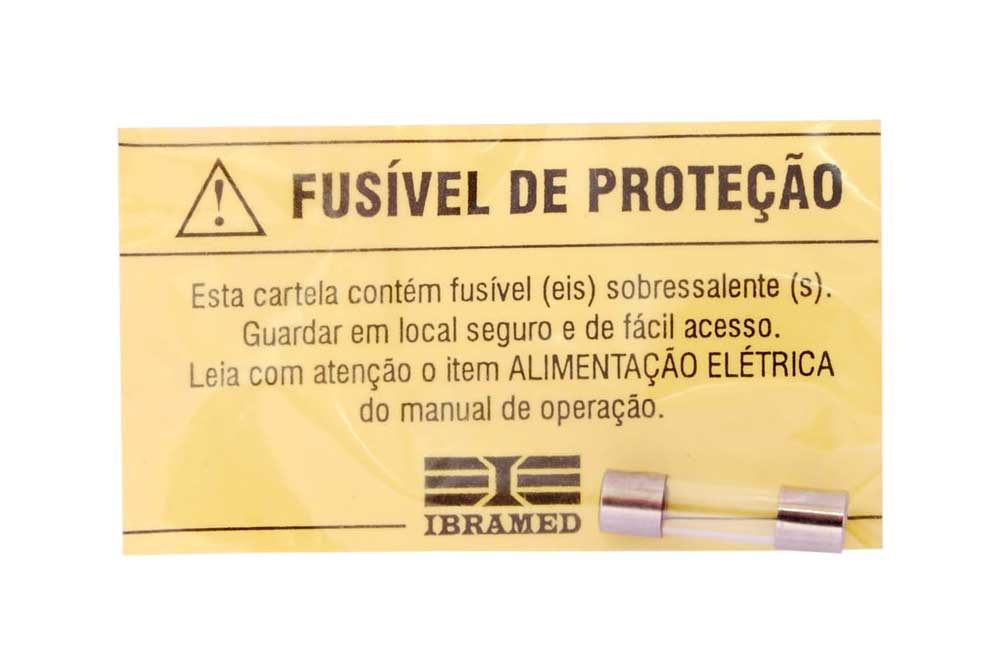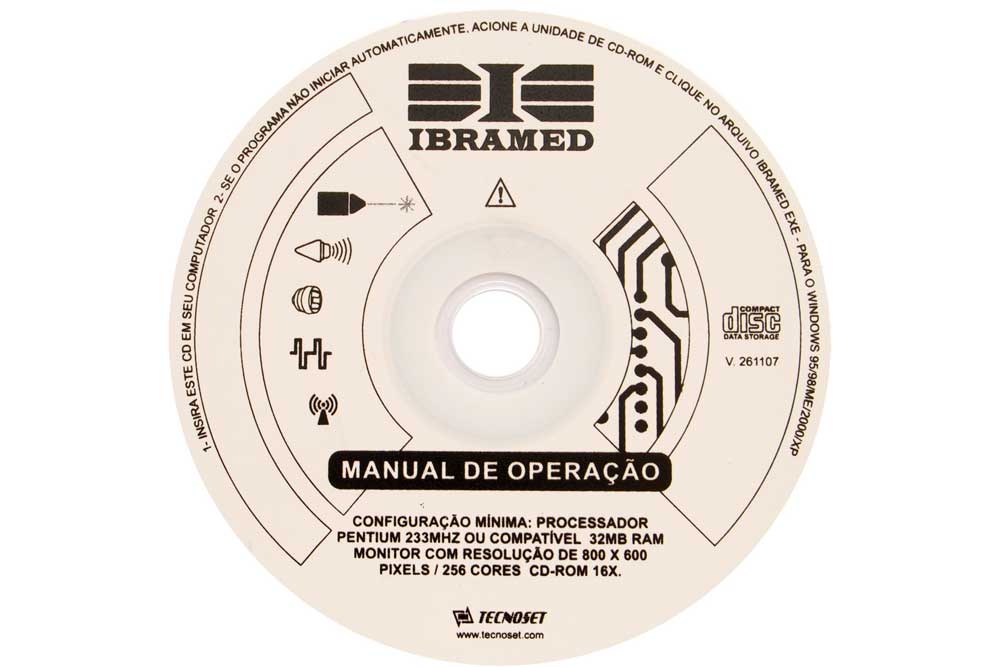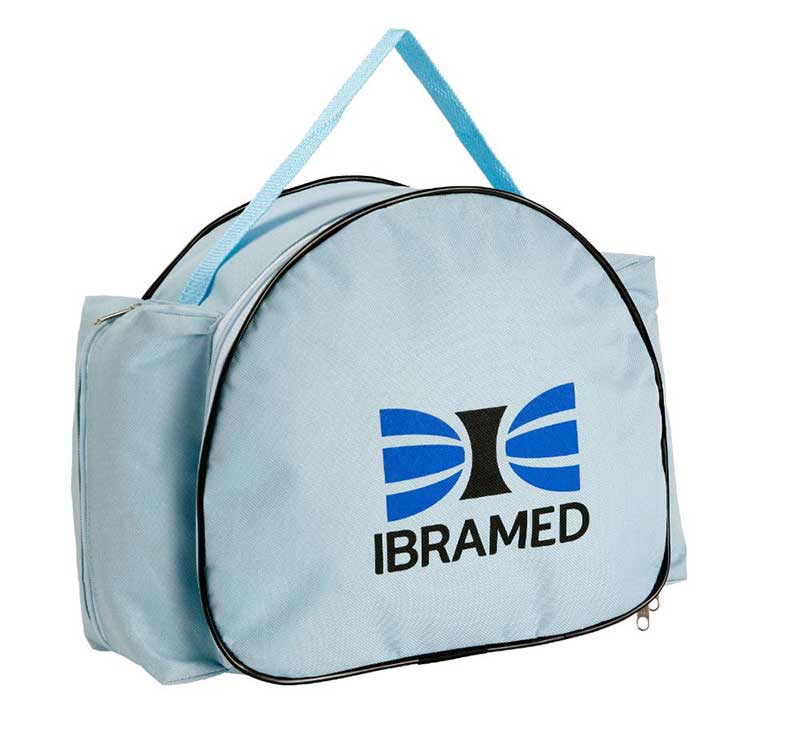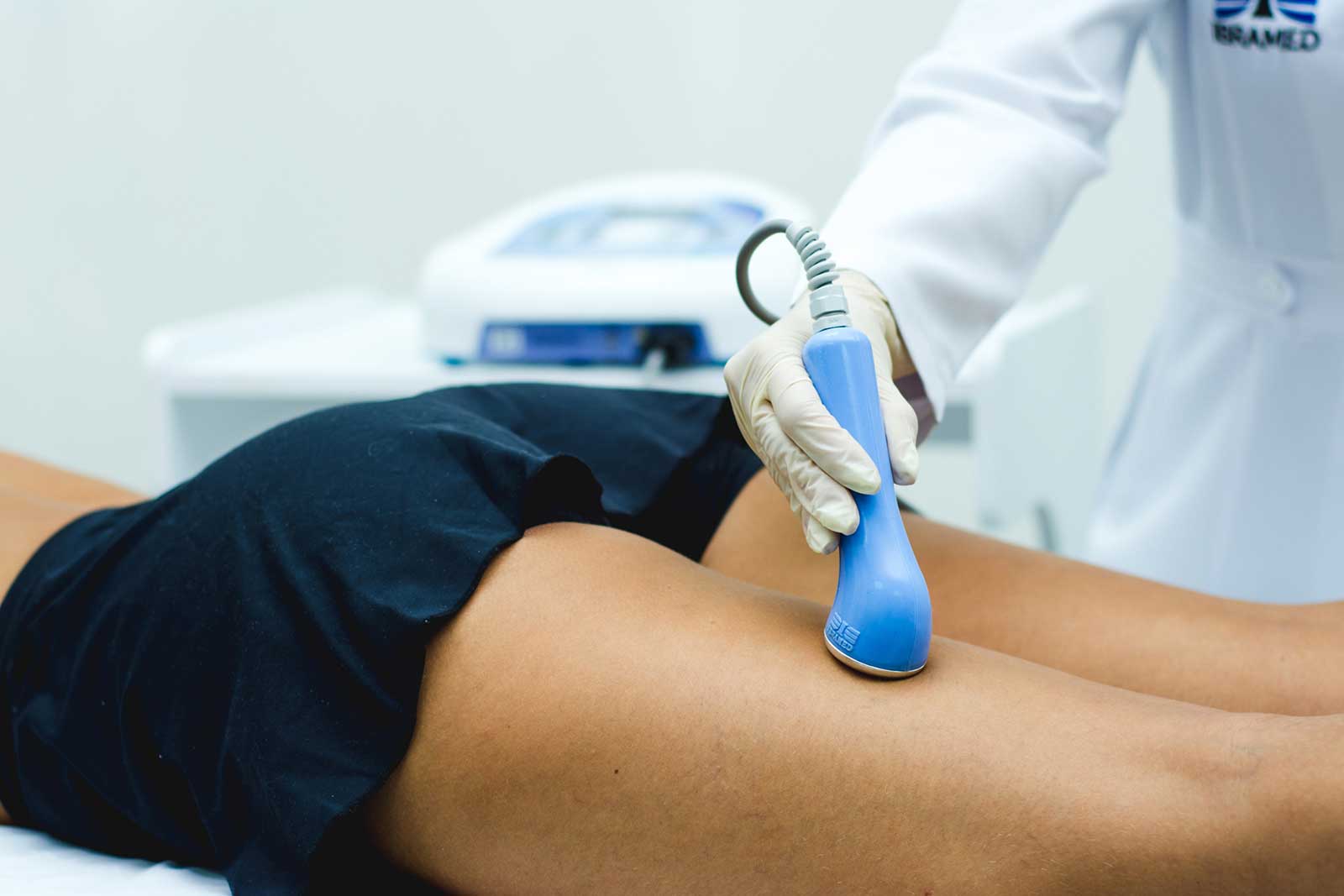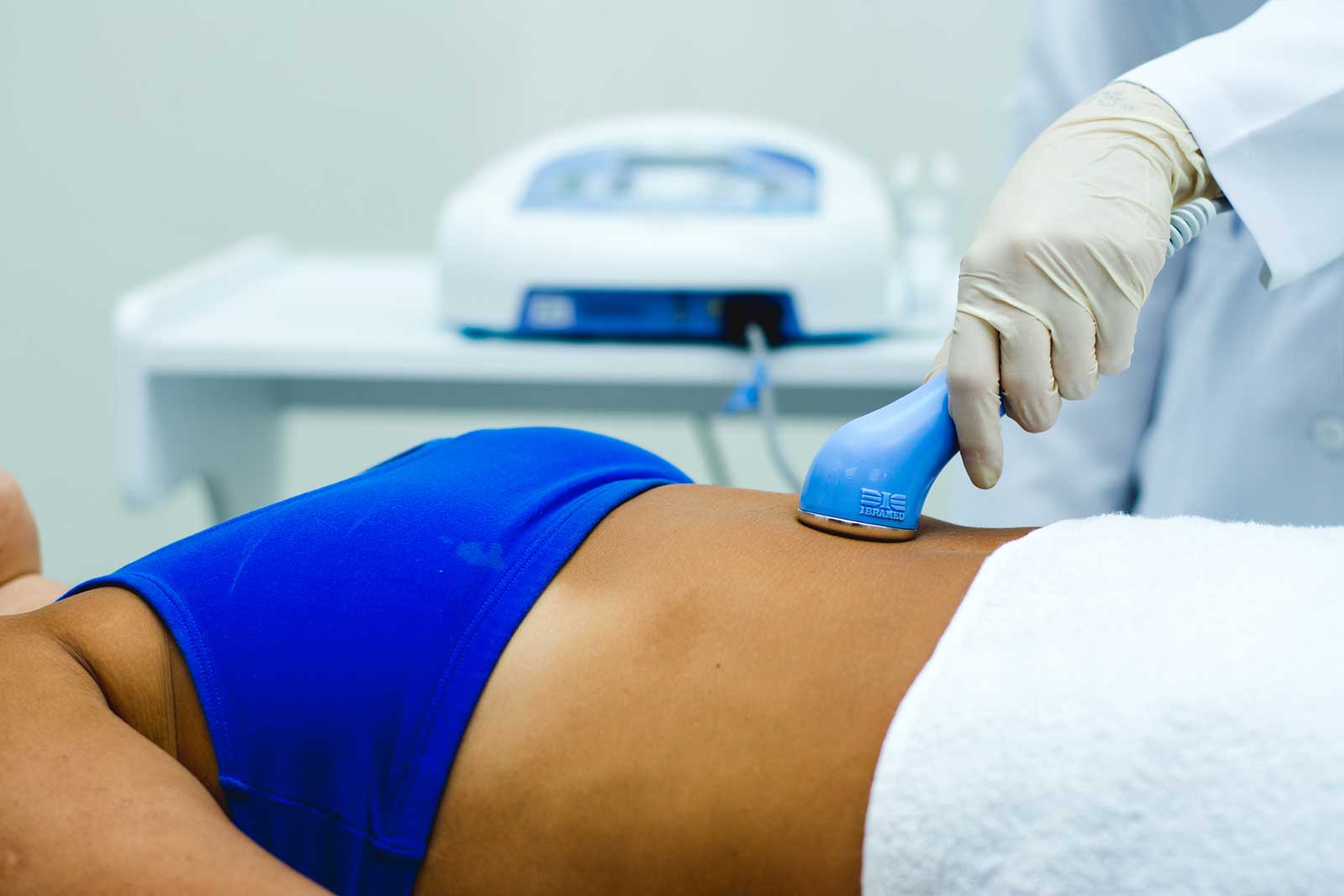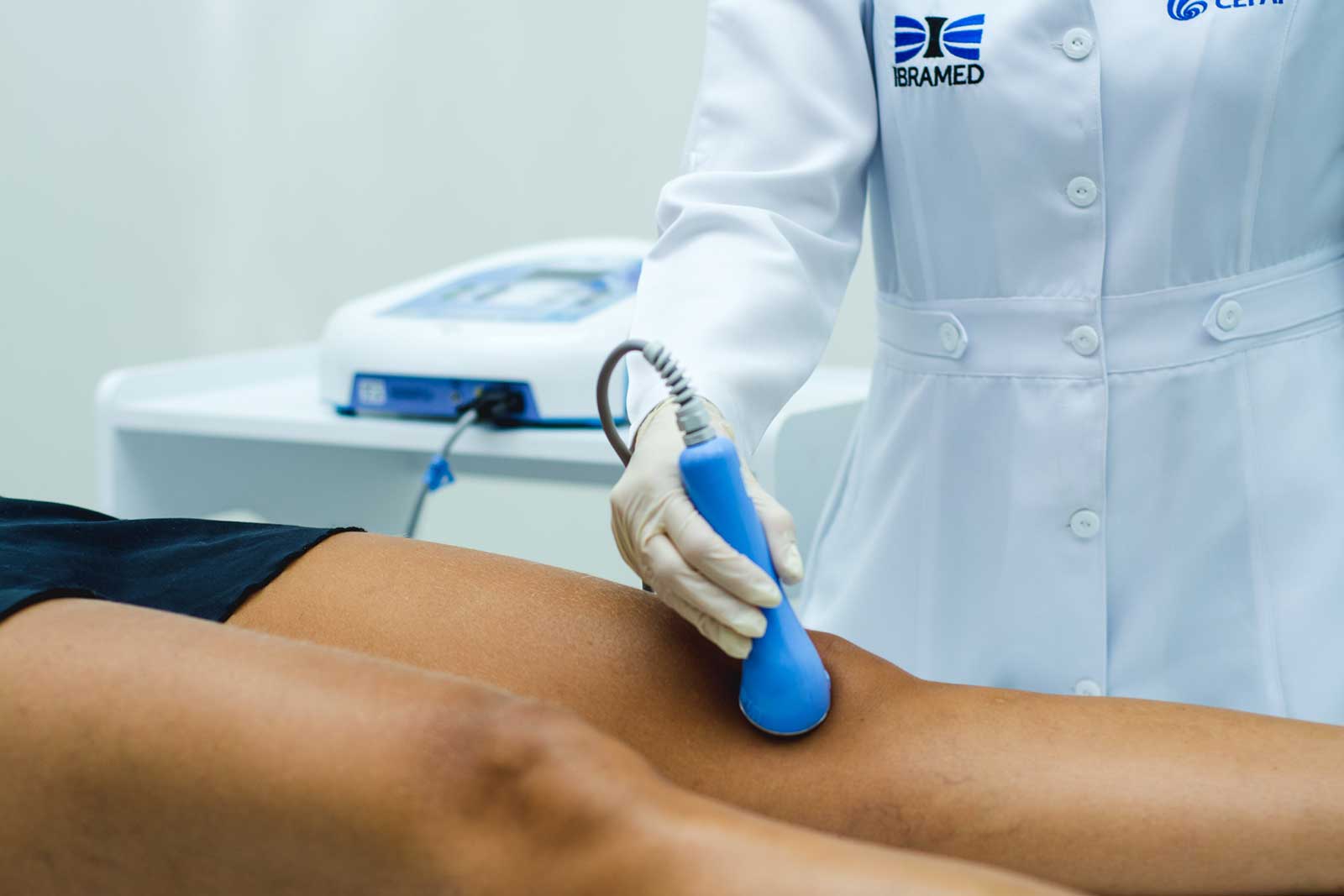
Sonopulse Compact
- Ergonomic Applicator
- ERA w/ 3 cm² and 7 cm²
- Frequency of 1 MHz and 3MHz
- Power: 21W and 3W
- Continuous Mode and pulsed mode
- Soft Touch Display
- Evidenced protocols in aesthetics
- Easy-to-use
The equipment
Sonopulse is a therapeutic ultrasound micro controlled equipment in the frequencies of 1 MHz and 3 MHz developed to use in physiotherapy treatments. SONOPULSE allows the choice between and ERA (Effective Radiating Area) of 7 cm² or 3 cm², making possible to select for the 1 MHz frequency an ERA of 7 cm² or 3 cm² and for the frequency of 3 MHz an ERA of 7 cm².
The average output power of the ultrasound is 21 Watts for the ERA of 7 cm² and 3 Watts for the ERA of 3 cm², so the maximum average intensity is 3 W/cm² for the ERA of 7 cm² and 1 W/cm² for the ERA of 3 cm². The ultrasound emission mode can be adjusted in continuous or pulsed mode, which has a pulse repetition frequency of 100 Hz, 48 Hz or 16 Hz and with pulse rate of 1/2 (50%) and 1/5 (20%). Sonopulse also has a key called PROG that allows the choice of pre-programmed treatments (stored in the device’s memory).
The equipment must be used only under the prescription and supervision of a licensed professional.
Technical characteristics
Eletric description
- Input: 100 – 240 V ~ 50/60 Hz
- Input power 100 VA
- Electric class: CLASS II
Ultrasound specifications
- Frequency: 1.1 MHz and 3.3 MHz
- Effective radiation area (ERA): 3 cm²; 7 cm²
- Work cycle 20%, 50%
- Mode: Continuous or Pulsed
- Frequency of pulse repetition: 100 Hz; 16 Hz; 48 Hz
- Transducer of 7cm²: 1.1 MHz and 3.3 MHz
- Treatment duration: 1 – 30 min
Output power
- Transducer of 7 cm²: 1.1 MHz; 3.3MHz
- Transducer of 3 cm²: 1.1 MHz
- Maximum Amplitude (7 cm²): 21 W
- Maximum Amplitude ( cm²): 3 W

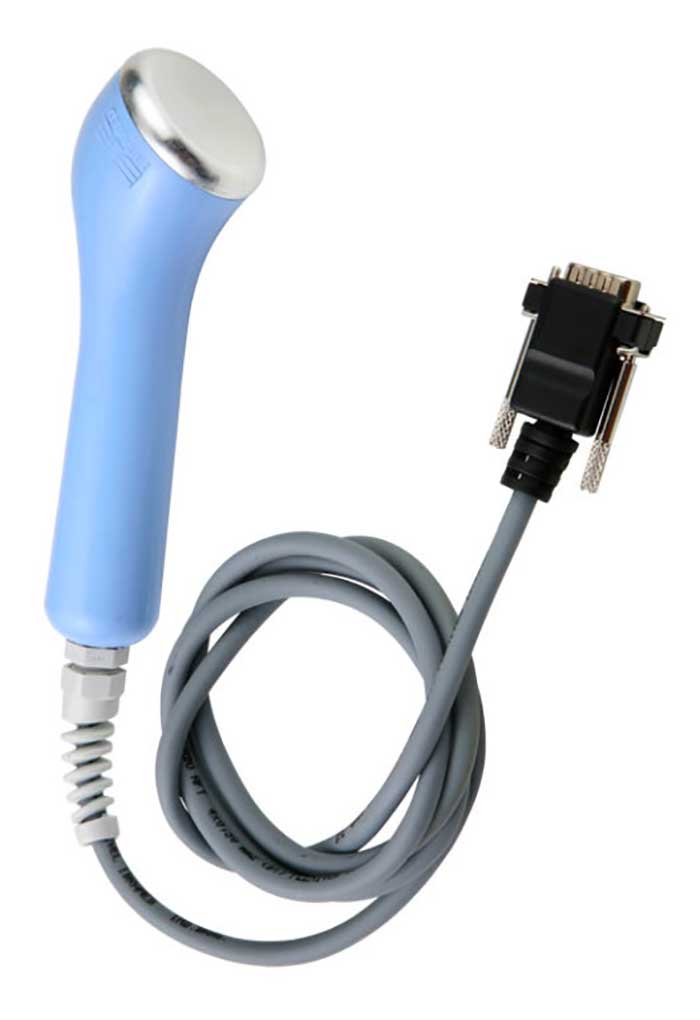
Applicator
Ultrasound Transducer w/ ERA of 7cm²
The advanced technology of the ultrasound transducer of SONOPULSE offers a temperature sensor that checks and maintains the working temperature of the piezoelectric crystal, and consequently, from the aluminum face of the transducer, which avoids the patient that unpleasant feeling of excessive heat. This sensor is programmed so that the temperature in aluminum never exceeds 41 degrees centigrade.
During treatment, especially when the coupling gel used doesn´t have a good quality, or when the technique is misapplied; the temperature may rise above 41 degrees. When it happens, the equipment “freezes” the time programmed in the timer and turns off the ultrasound emission. At this time a beep sound is emitted and a warning message will appear on the display of the equipment. The professional must continue “moving”” the transducer, because after a few seconds the temperature will return to normal. The equipment automatically “defrosts” the time, returning to the original program.
Mechanisms of action and Physiological effects
Ultrasound can be defined as high frequency mechanical vibrations (above 20kHz), in which its energy is a consequence of the piezoelectric effect. This piezoelectric effect is due to electric pulses executed on the piezoelectric crystal that suffers also, compressions and rarefactions; generating with this high frequency mechanical energy that when applied to biological tissues produces oscillatory effects on molecules and surrounding structures, which consequently produces therapeutic effects. The frequency of 1MHz has a longer wavelength, generating energy propagation in deeper tissues. In contrast, the frequency of 3MHz presents the shortest wavelength, leading to energy absorption in more superficial tissues.
In the ultrasound therapy, the energy between tissues can be delivered in continuous or pulsed mode, and its effects can be thermal and non-thermal. In addition, the energy absorption factor depends on the nature of the tissue, its vascularization and ultrasound frequency.
Thermal effects are those obtained when tissue temperature increases by 40 and 45 ° C, generating an increase in the microcirculation, vasodilation, increase in the collagen extensibility, reducing pain and muscle stiffness. The non-thermal effects are: microbubble formation (cavitation), increase in the permeability of cellular membrane, acceleration on process of tissue regeneration and healing.
Indications
Therapeutic massager
- Pain releif
- Reduction of muscle spasm
- Localized increase in blood flow
- Increase range of motion of contracted joints using heat and stretch techniques

Contraindications
Therefore, therapeutic ultrasound should not be applied over the uterus unless specific assurance can be attained from the patient that she is not pregnant.
Therapeutic ultrasound must not be applied over neoplastic areas or over areas from which tumors have been removed.
Therapeutic ultrasound must not be applied over the eyes.
Therapeutic ultrasound must not be applied on ischemic tissues, where the blood supply may be incapable of following the increase in metabolic demand and result in necrosis.
Therapeutic ultrasound must not be applied over bone growth centers.
Ultrasound therapy is not recommended for patients with implanted electronic devices (cardiac pacemakers, deep brain stimulation devices).
Do not apply ultrasound over areas previously treated with radiotherapy.
Ultrasound must not be applied over the testes, to avoid increases in temperatures.
Ultrasound must not be applied over the heart.
Therapeutic ultrasound must not be applied over areas of thrombophlebitis deep vein thrombosis emboli and severe atherosclerosis.
Ultrasound treatment must be avoided over the stellate ganglion, spinal cord after laminectomy, when great tissue resections have been performed, under subcutaneous major nerves and the cranium.
In an area of the body where a malignancy is known to be present.
Over reproductive organs.
Over open wounds or lesions, including severe or cystic acne.
To the brain, spinal cord or large subcutaneous peripheral nerves.
Treatment of acute infection of bone or tissue as the treatment could force areas of pus into surrounding tissue, thereby spreading infection.
ADVERSE REACTIONS
The therapeutic ultrasound when applied with continuous rotary movements may cause tingling sensation and/or heat. On the contrary, if applicator is kept in the same local for more than some seconds, in high energy, it could be uncomfortable.
Application techniques
- Examine the skin and clean the area to be treated prior to application, using 0.5% alcohol chlorhexidine;
- Before applying the ultrasound, clean the area with soap and water to remove the oil and possible skin fragments, reducing the difficulties to the passage of the ultrasound through the skin.
- Clean the applicator with soap and water before each therapy session.
- Apply conductor gel over the patient’s treatment area.
- Move the ultrasound transducer constantly during the session in circular movements.
- Examine the skin again after treatment.
Accessories
